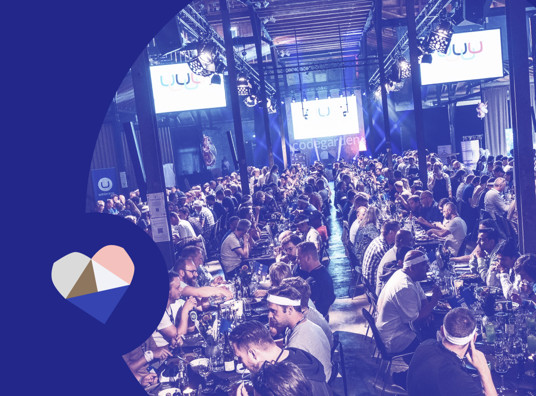A Non-Developer’s take on Codegarden 2025
Not a Developer? Here’s why Codegarden was still incredibly valuable, writes Steph Peschel.
Design meets development
After three years at true, working on digital experiences built with Umbraco, I’ve developed a strong understanding of the CMS from a UX perspective—documenting requirements, supporting template setups, and collaborating with developers.
However, as a UX Lead, I’ve often felt a technical knowledge gap. I sometimes struggle to contribute meaningfully in more complex development discussions, which can limit my ability to challenge assumptions or explore alternative approaches that could improve the user experience.

Codegarden 2025 was my first time attending a major Umbraco conference—and it was made even more special by the opportunity to speak at the event alongside my colleague, Georgina Bidder. While I’ve previously dipped my toes into the Umbraco community through Umbristols and a podcast appearance, this event offered something entirely new: a chance to close that knowledge gap, connecting with my colleagues and wider Umbraco community in a new way.
Attending a developer conference – while not being a developer.
Heading into the event, I knew much of the content might go over my head. That said, Umbraco’s created an agenda that offered a strong mix of talks—there was always at least one session running that didn’t require deep developer knowledge.
Still, I didn’t want to restrict myself to just the non-technical talks. I wanted to challenge myself, broaden my understanding of the product, and strengthen my ability to collaborate with my technical colleagues. So, I purposefully attended product-focused and technically oriented sessions.
What I found most valuable was attending these talks alongside my colleagues. It gave me the chance to ask questions about how we’ve approached similar challenges, how new technologies might change our thinking, and what problems we could now overcome—whether those were development hurdles or UX limitations. My curiosity often sparked follow-up questions from my colleagues too, especially when they didn’t know the answer.
Hearing about these innovations also made me think of our current clients—their challenges, their needs—and how this new functionality could help us meet them more effectively. It was exciting and validating, a clear reminder that I was getting value from being there.

Key takeaways and product updates from an experience perspective:
Plenty of new features and functionality were announced, but a few stood out to me for their potential to significantly improve both the end-user and content editor experience.
Block Level Variation: This feature supports easier publishing of multilingual pages that maintain consistent design and assets, while allowing for different translated content or tone. It’s a powerful tool for clients aiming to localise content while preserving global brand consistency.
Launch of the new backoffice: An implementation of a new and improved Umbraco admin experience, that had apparently been in the works for a long time. Our talk emphasised the importance of the content editor experience; this update resonated with me.
Reusable content: A major win for marketing teams. The ability to reference the same content from any page and then make changes, which are reflected everywhere will be a significant improvement. It’s particularly beneficial for managing localised websites that rely on shared content and components.
Umbraco and AI: Umbraco announced its official Model Content Protocol (MCP) server, allowing AI tools “to read, understand and perform actions on your Umbraco project.” This technology enables AI agents to interact directly with Umbraco's Management API. It will enable teams to effectively plug their preferred AI platforms or LLMs. The MCP server then allows AI to chain tasks together, automating complex workflows, creating and updating content, supporting dynamic pricing, driving insights and optimisations, or any number of growing possibilities.

Learnings from the non-technical talks:
I attended several of the non-technical talks to gain insight into how others apply and approach user experience and design—especially in a setting that wasn’t a traditional design conference. Several sessions tackled broader topics, relating to team cohesion and collaboration, offering valuable perspectives for anyone in a leadership role looking to better support their team. Notable standouts for me included:
Intentionally building community through ritual - Jason Wodicka
This was my favourite talk of the conference. Jason explored how rituals - from daily stand-ups and sprint ceremonies to shared work practices, help transform a group of individuals into cohesive team. He also touched on how unintentional behaviours can build walls, creating inner circles or exclusive cliques that alienate others. This dynamic can negatively impact the broader organisation and colleagues who feel on the outside.
As someone who’s often the sole advocate for users and design, this really resonated. My background in psychology reinforces how damaging exclusion can be to confidence, sense of value, and ultimately an individual’s ability to deliver their best work.
You Failed. Now What? - Semira Allen
This interactive session stood out because it encouraged honest conversations about professional failures. In design, we often champion failing fast and learning from mistakes—but how safe do we really feel to fail? If we’re not openly sharing our failures, are we truly learning from them? It’s inspired me to be more transparent about challenges at true, and to include reflections on what didn’t work in future case studies—so that others can learn and grow.
Friendly by design - Erica Quessenberry
This talk tackled privilege and how it shapes our industry— How it influences the work we do, but who enters the community of designers and developers. The experiences and opportunities that lead us to our professions may not be open to everyone. It challenged us to reflect on our advantages and to consider how we can be more inclusive in the communities and voices that shape solutions.
What makes the Umbraco community so special?
Before attending, I’d heard how welcoming the Umbraco community was – including several jokes about it “not being a cult”. I wondered if this was simply something people were saying. Attending conferences is meant to be fun and enjoyable, with networking and socialising being key elements, so what was going to be so special?
It felt like everyone already knew each other, but still made a real effort to include newcomers. There was even guidance in the keynote on how to stand in a group to signal openness and invite others in. That level of care and focus on emotional and social safety really stood out.
It’s a lesson for anyone organising events: it’s not just about getting people to attend - it’s about making sure they connect, share, and ultimately, learn more by learning together.



